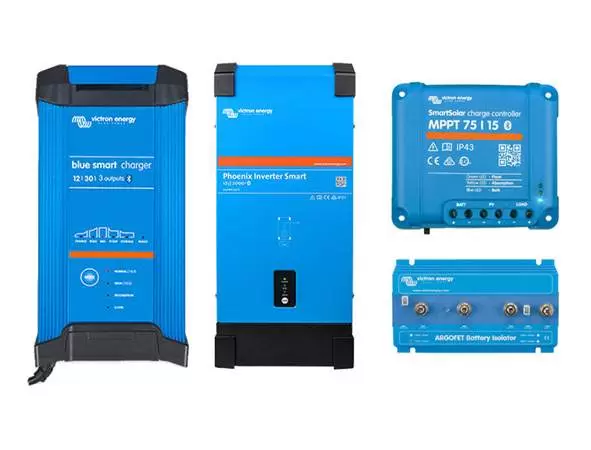The Toyota Hilux is renowned for its durability and reliability, but like any vehicle, it requires maintenance to ensure optimal performance. A crucial maintenance component is the Toyota hilux starter, which plays a significant role in the vehicle’s ignition system. Understanding the importance of a reliable starter and knowing when it requires attention can enhance the longevity and performance of your Hilux.
Introduction to the Toyota starter Motor
The starter motor in a Toyota Hilux serves the essential function of beginning the engine’s operation. It converts electrical energy from the battery into mechanical energy, enabling the engine to turn over and start. When the ignition key is turned or the start button is pressed, the starter motor receives a high current from the battery.
These high current powers an electromagnet inside the motor, pushing a small gear on the starter motor shaft into the engine’s flywheel. This interaction allows the engine to begin its operation, ensuring a smooth start every time.
Understanding the Functionality of a Starter Motor
The starter motor is pivotal in engaging the engine’s flywheel to initiate combustion. Upon turning the ignition key or pressing the start button, the starter motor is activated by a high current supplied by the battery. This current energises an electromagnet within the motor, causing a small gear on the starter motor shaft to engage with the flywheel.
The mechanical interaction between the gear and the flywheel enables the engine to crank, facilitating the internal combustion necessary for the engine to start running. Without this crucial component, the engine could not begin to, underscoring the starter motor’s indispensable role in vehicle operation.
Features of a Genuine Toyota Hilux Starter Motor
Genuine toyota hilux starter motor is crafted from robust and durable materials designed to withstand the rigours of daily use. These high-quality components ensure longevity and consistent performance, minimising the need for frequent replacements.
Precision Engineering
Genuine starter motors are manufactured to exact specifications and designed to fit perfectly with the Toyota Hilux’s engine. This precision engineering ensures optimal functionality and reduces the risk of mechanical failures.
Enhanced Durability
Genuine starter motors are built to endure extreme conditions, including high temperatures and heavy usage. This enhanced durability is crucial for maintaining the reliability of the Toyota Hilux, especially in demanding environments.
Optimal Performance
A genuine starter motor guarantees that the Toyota Hilux starts smoothly and efficiently every time. This performance is achieved through rigorous testing and adherence to Toyota’s quality standards.
Corrosion Resistance
Genuine starter motors are treated with anti-corrosion coatings that protect against rust and degradation. This feature is essential for vehicles frequently exposed to moisture and harsh weather conditions.
Warranty Coverage
Purchasing a genuine Toyota starter motor often includes warranty coverage, providing peace of mind and assurance of the product’s reliability. This warranty typically covers defects and failures, ensuring support in case of any issues.
Common Issues with Toyota starter Motors
Over time, Toyota starter motors can encounter various issues stemming from wear and tear. One common problem is that the starter motor clicks when the ignition key is turned, which often signifies a malfunctioning solenoid. Another issue is a grinding noise, indicating worn-out gears or a misalignment between the starter motor gear and the engine’s flywheel.
In some cases, the starter motor may fail to engage altogether, which could be due to electrical faults within the motor or corroded connections. Excessive heat or moisture can exacerbate these issues, leading to further deterioration. Identifying and addressing these problems early can prevent more significant damage to the vehicle’s ignition system.
Signs That Your Toyota Hilux Starter Motor Needs Replacement
Owners of the toyota hilux starter motor should be vigilant for specific signs indicating the need for a starter motor replacement. One key indicator is a slow-cranking engine, where the vehicle struggles to start, and the engine turns over more slowly than usual. The frequent need for jump starts is another warning sign, suggesting that the starter motor may be drawing excessive current due to internal issues.
Additionally, visible smoke or a burning smell during ignition attempts is a severe indicator of potential electrical problems or overheating within the starter motor. Another symptom to watch for is unusual noises, such as grinding or clicking, which can signify worn-out gears or solenoid issues. Paying attention to these signs and addressing them promptly can prevent more severe damage to the vehicle’s ignition system.
Steps to Replace a Toyota starter Motor
Before commencing the replacement, ensure the vehicle is parked on a flat surface and the ignition is turned off. Disconnect the battery to prevent any electrical hazards during the process. It is advisable to wear safety gloves and goggles.
Locate the Starter Motor
The starter motor is typically located near the bottom of the engine, attached to the transmission bell housing. For the exact location and additional details, refer to the vehicle’s service manual.
Remove Obstructions
Depending on the model, it may be necessary to remove surrounding components to access the starter motor. This could include the air intake system, skid plate, or other nearby elements.
Disconnect the Wiring
Carefully detach the electrical connections from the starter motor. There are usually two primary connections: the battery cable and the ignition switch wire. Label them to ensure correct reinstallation.
Unbolt the Starter Motor
Use appropriate tools to remove the bolts securing the starter motor to the engine. Keep track of all bolts and components removed during this process.
Install the New Starter Motor
Position the new starter motor in place and secure it with bolts. Reconnect the wiring, ensuring all connections are tight and correctly aligned. Finally, the battery is reconnected, and the starter motor is tested by starting the engine.
Benefits of Using a Genuine hilux starter Motor
Genuine hilux starter motor offer unparalleled compatibility and reliability, ensuring the starter motor integrates seamlessly with the vehicle’s engine. These authentic components adhere to Toyota’s rigorous quality standards, leading to superior performance and longevity. Using a genuine starter motor also minimises the risk of mechanical failures and issues related to incorrect fitting, familiar with aftermarket alternatives.
Additionally, genuine parts are subjected to thorough testing, providing assurance against defects and enhancing the vehicle’s overall dependability. The use of high-quality materials in genuine starter motors further ensures resilience against extreme conditions, such as high temperatures and heavy usage, making them an ideal choice for maintaining the robustness of the Toyota Hilux.
Comparing Genuine and Aftermarket Starter Motors
Genuine Toyota starter motors are engineered to meet precise standards and specifications set by the manufacturer, ensuring optimal performance and reliability. These authentic components are designed to fit seamlessly with the vehicle’s engine, reducing the likelihood of installation errors and mechanical issues. Genuine starter motors undergo rigorous testing and quality control measures, ensuring their durability and long-term functionality.
In contrast, aftermarket starter motors, while often more affordable, can vary significantly in quality and may sometimes meet different stringent standards. These parts might not fit as accurately, potentially leading to operational issues and reduced performance. The materials used in aftermarket alternatives can also be less durable, making them more susceptible to wear and tear, especially under extreme conditions.
Furthermore, genuine starter motors often have warranty coverage, offering additional security against potential defects or failures. Aftermarket parts may lack this level of protection, leaving vehicle owners without recourse in the event of a malfunction. While the initial cost of genuine starter motors may be higher, reliability, performance, and peace of mind can make them a worthwhile investment for maintaining the Toyota Hilux’s integrity.
Maintenance Tips for Prolonging 2TR Starter Motor Life
Regular upkeep is essential to ensure the longevity of a 2TR Starter Motor.
- They ensure that the battery terminals remain clean and corrosion-free, which is crucial, as dirty or corroded terminals can impede the electrical flow needed for the starter motor to function efficiently.
- Inspecting and tightening all connections can help prevent mechanical failures, as loose connections can result in inconsistent power delivery to the starter motor.
- Additionally, avoiding frequent short trips where the engine is stopped and started repeatedly can help preserve the starter motor.
- Such usage patterns can place undue strain on the starter, leading to accelerated wear and tear.
- Ensuring the battery is in good condition is also vital; a weak or failing battery can cause the starter motor to work harder than necessary, increasing the risk of premature failure.
- Lastly, it is advisable to conduct periodic checks of the starter motor for any signs of damage or wear. Listening to unusual sounds during ignition attempts can help detect potential issues early.
- By adhering to these maintenance tips, Toyota Hilux owners can help extend the operational life of their starter motors and maintain the vehicle’s reliability.
Troubleshooting Starter Motor Problems in the Toyota Hilux
Troubleshooting issues with the Toyota Hilux motor begins with verifying the battery’s condition, as a weak or failing battery can significantly affect the starter motor’s performance. Ensure the battery terminals are clean and corrosion-free and all connections are secure. Next, inspect the wiring to the starter motor for any wear or damage, as faulty wiring can impede the electrical flow necessary for proper operation.
If the engine fails to crank, listen for any unusual noises, such as clicking or grinding, which may indicate problems with the solenoid or worn-out gears. Additionally, examine the starter motor for any visible signs of damage or overheating. Excessive heat or a burning smell can suggest internal faults within the motor, requiring immediate attention.
Another step is to check the ignition switch and relay, which are integral to the starter motor’s activation. Testing these parts can help identify whether the issue lies within the starter motor or other ignition system parts. Conducting these systematic checks can help diagnose and resolve starter motor problems effectively.
Conclusion
Maintaining a reliable toyota starter motor is fundamental for ensuring the vehicle’s overall performance and longevity. Recognising this component’s significance and the advantages of using genuine Toyota parts can significantly enhance the vehicle’s dependability. Awareness of common starter motor issues and their early signs allows for timely interventions, preventing more severe damage to the ignition system. By following proper maintenance practices and opting for high-quality starter motors, Hilux owners can ensure that their vehicles operate smoothly and efficiently. Regular checks and proactive measures can help avoid the inconvenience and potential costs associated with starter motor failures.
FAQs
What are the signs of a failing Toyota starter motor?
One of the most common indicators is a slow-cranking engine, where the vehicle struggles to start and turns over more slowly than usual. Frequent jump-start needs may also point to starter motor issues, often caused by excessive current draw due to internal faults.
How often should a toyota starter motor be inspected?
Including the toyota starter motor in routine vehicle maintenance checks is advisable; they are typically performed every 12,000 to 15,000 miles or at least once a year. Regular inspections should focus on the starter motor’s electrical connections, ensuring they are clean and secure.
Is replacing a faulty starter motor with a genuine Toyota part or an aftermarket one better?
Replacing a faulty starter motor with a genuine Toyota part is generally recommended for optimal performance and reliability. Genuine starter motors are designed to fit seamlessly with the Toyota Hilux’s engine, minimising the risk of mechanical failures and installation errors.
| Related Business Listings |
| Contact Directory |
| Local Business Profiles |



